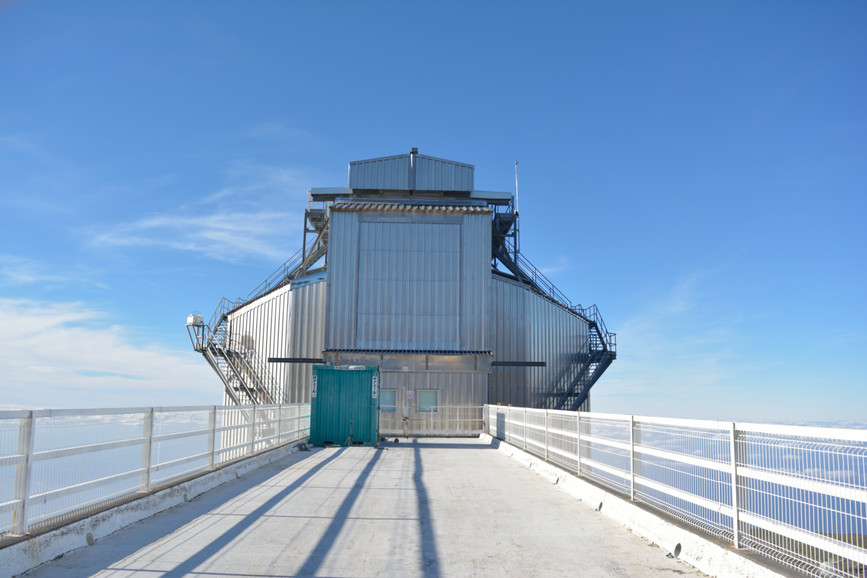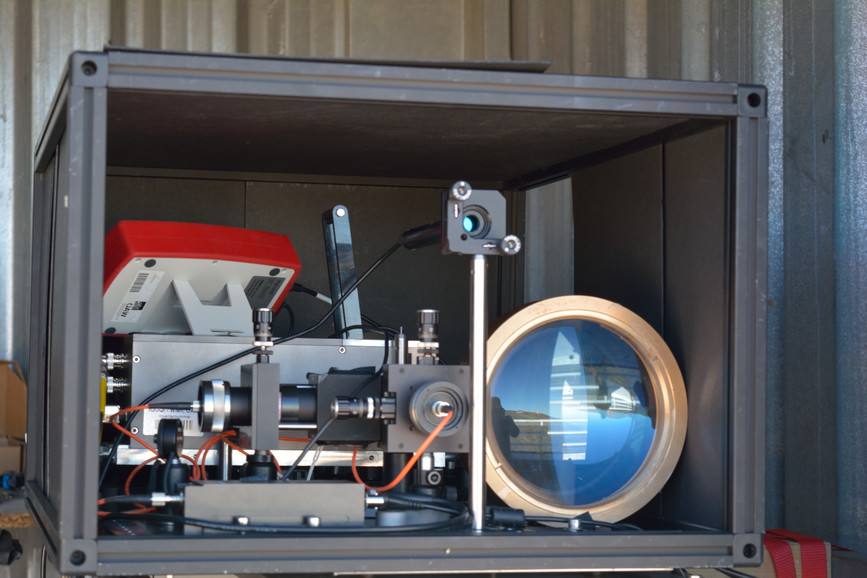The Nobel Prize in Physics and the Telescopio Nazionale Galileo
The 2022 Nobel Prize in Physics was awarded to Alain Aspect, John F. Clauser and Anton Zeilinger, pioneers of quantum physics with their experiments on the quantum entanglement, a sort of connection between very distant particles: in a pair of entangled particles, everything happening to one also affects the other, regardless of their distance.
In 2018, Anton Zeilinger (Austrian Academy of Sciences) and his team used the Telescopio Nazionale Galileo (TNG) together with the William Herschel Telescope (WHT), both located at the Roque de Los Muchachos Observatory, to carry out an important experiment to prove the quantum entanglement using photons from very distant astronomical objects.
In the experiment, the two telescopes looked at two different, almost opposite locations on the sky using for the first time two distant quasars (quasi-stellar objects) as a random number generator. The quasars lie about 8 and 12 billion light years away from Earth, respectively, and since the light we detect has been emitted so long ago, any connection between the quasars is almost impossible.
While the two telescopes were observing the two quasars, the team of scientists were located at a mobile laboratory located between the two telescopes where they generated pairs of entangled photos and beamed particles from each pair in opposite directions towards the two telescopes.
The telescopes were equipped with a two-channel photometer each and collected the light from a quasar. An optical filter in the photometer split the light from the quasar between redder and bluer photons and these, randomly falling on one of the photometer’s channels, were used as the random choice to conduct the measurements. This choice was used to control the system of reference on which to measure the polarization state on pairs of entangled photons (i.e. pairs of photons created in ways such that the quantum state of each particle cannot be described independently from the state of the other). The individual polarization of each entangled photon was measured as decided by the fluctuations of the light from its respective quasar.
“It is difficult to imagine that an experiment in 2018 at the Roque de Los Muchachos Observatory would have had such great importance in the awarding of the Nobel Prize in Physics to Prof. Anton Zeilinger a few years later”, recalls Ennio Poretti, Director of the TNG. “Together with the WHT, TNG was ready to observe two quasars placed in opposite directions in the sky. Their light used as a generator of independent random numbers confirmed the expectations of quantum mechanics which predict the violation of the so-called Bell inequality among entangled photons contrary to classical models. The merit of the instrument set up at the ORM is to provide these results with a high degree of significance.”
Useful links:
- Nobel on Media INAF
- The TNG and the confirmation of quantum entanglement using photons from distant astronomical objects

Detailed view of one of the 2 receiver stations for entangled photons which were operated at the TNG and the WHT.

One of the receiving stations for the entangled photons was placed in a container on the access bridge to the TNG. Credits: Dominik Rauch / Austrian Academy of Science.

